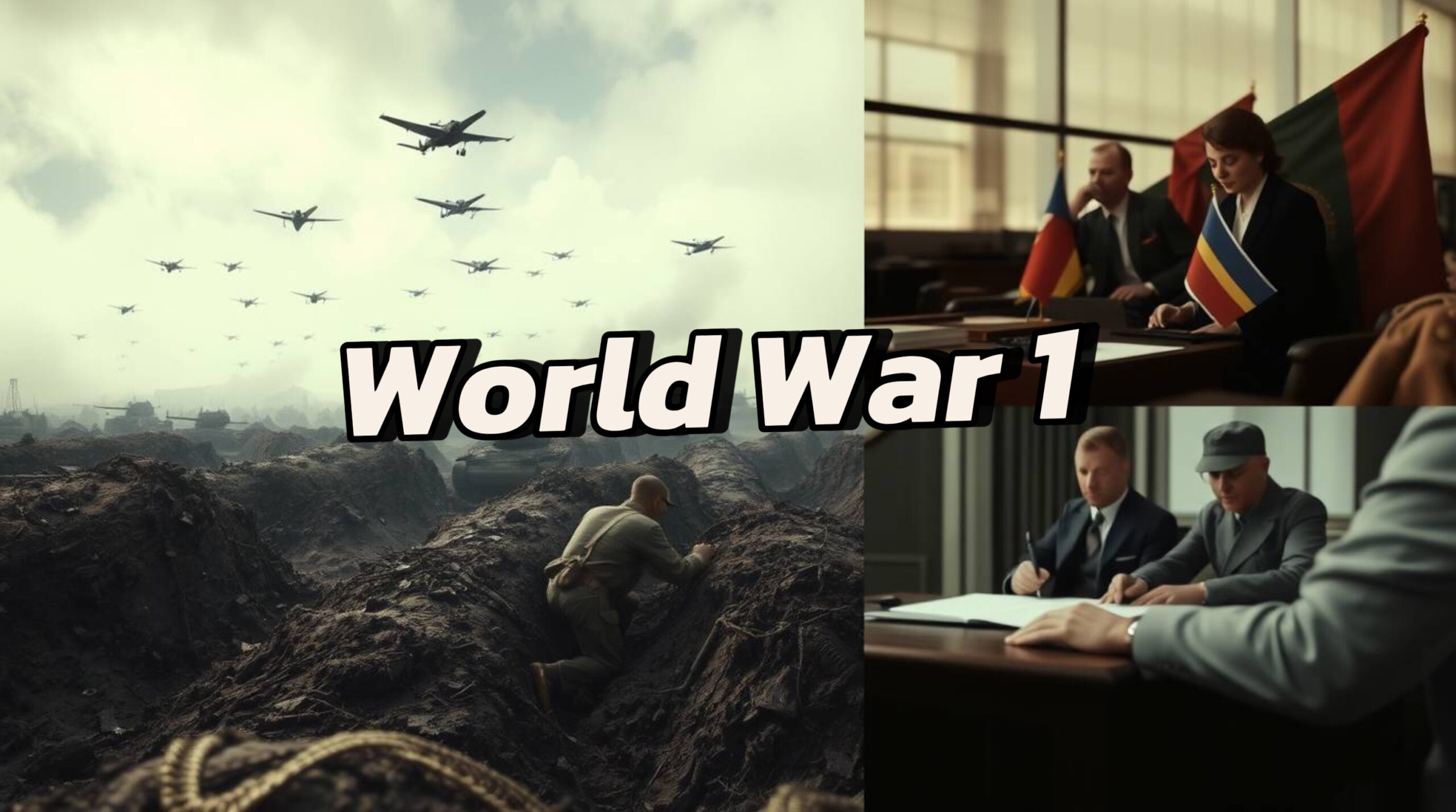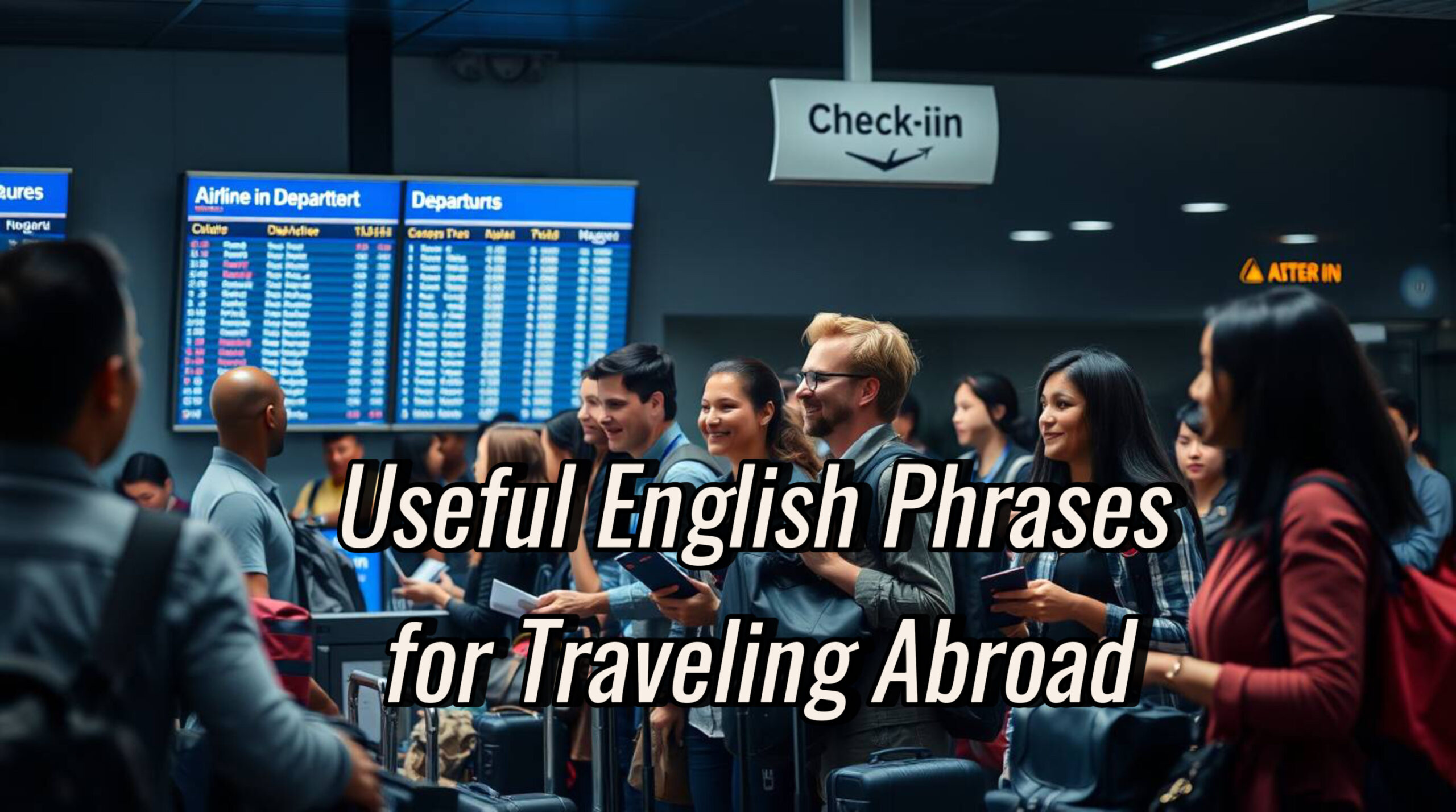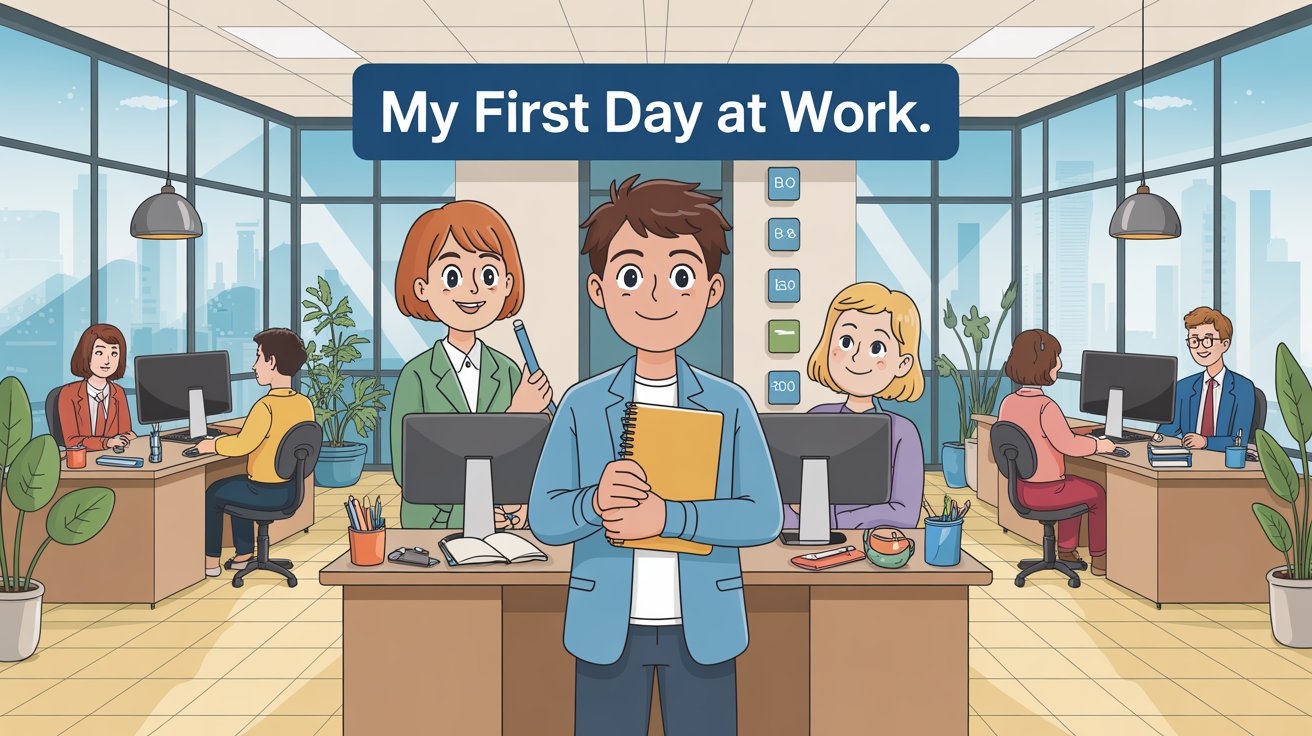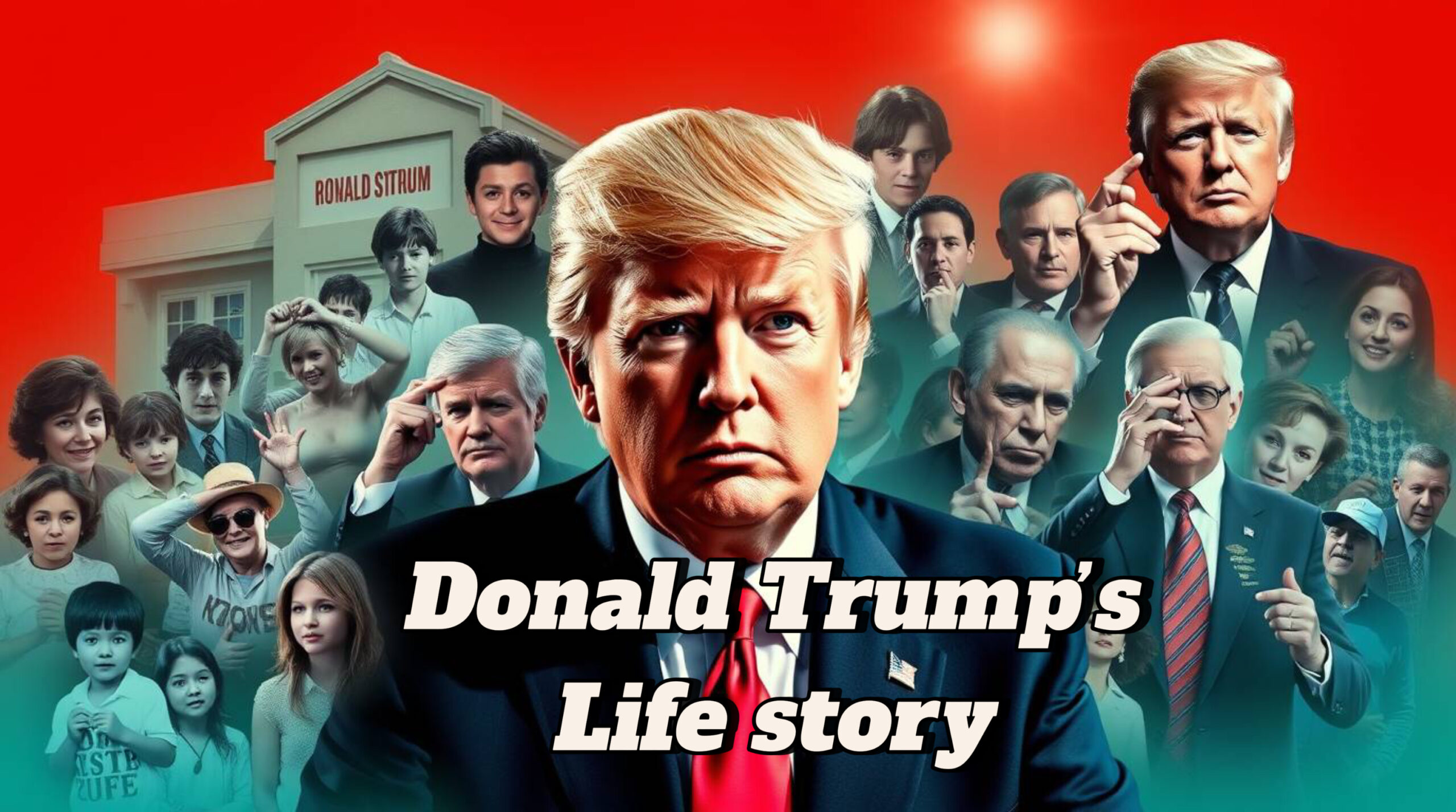Chapter 1: Introduction
Hello, everyone. My name is Ben. Today, we will learn about World War 1. This war was big. It changed the world. But, what was World War 1? When did it happen? Why did it start? In this documentary, we will answer these questions.
World War 1 began in 1914. It ended in 1918. Many countries fought in this war. Millions of people were affected. Some people call it The Great War. It was one of the most important events in history.
Before the war, Europe was peaceful. Countries traded goods. People traveled freely. But, something happened in 1914. It changed everything. A small event started a big war.
In the next chapter, we will talk about life before the war. We will see how people lived before everything changed.
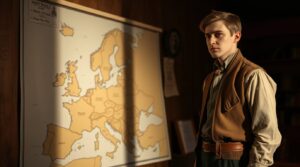
Chapter 2: The World Before War
Before World War 1, the world was very different. Many countries in Europe were powerful. They had kings, queens, and emperors. People worked in factories, farms, and markets. Life was simple for many.
But, things were changing. Technology was growing fast. New machines, trains, and ships made life easier. People traveled more. Cities grew bigger. Businesses made more money.
The Big Powers in Europe
In 1914, there were five big countries in Europe.
- Britain – It had the biggest navy. It ruled many lands.
- Germany – It was strong in industry and the military.
- France – It had a powerful army. It wanted to stay strong.
- Russia – It was very big. It had many people. But, it was not modern.
- Austria-Hungary – It was a mix of many different people and cultures.
These countries had alliances. An alliance is when countries promise to help each other in war. Some countries were friends. Some were enemies.
Even though life was good for many, problems were growing. Countries wanted more land. They wanted more power. They built bigger armies and navies. People felt proud of their countries. But, they also feared war.
There were disagreements between countries. Some wanted peace. Others wanted to show their strength. Leaders tried to keep things calm, but the tension kept growing.
In the next chapter, we will talk about what happened in 1914. One small event started a big war.
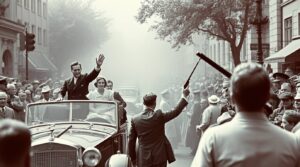
Chapter 3: The Start of the War
It was June 28, 1914. A man named Archduke Franz Ferdinand was in Sarajevo. He was the next leader of Austria-Hungary. He and his wife were riding in a car. Many people were in the streets. But, something terrible happened.
A young man named Gavrilo Princip was there. He was from a group that wanted freedom for Serbia. He had a gun. When the car passed by, he shot and killed Franz Ferdinand and his wife.
This event shocked the world. Austria-Hungary was angry. They blamed Serbia. They wanted revenge.
Austria-Hungary declared war on Serbia. But then, other countries got involved. Why? Because of alliances.
– Russia helped Serbia.
– Germany helped Austria-Hungary.
– France helped Russia.
– Britain joined later.
The war started quickly. In just a few weeks, many countries were fighting. It became a world war.
At the start, many people wanted war. Soldiers marched in the streets. People cheered for them. They thought the war would be short. Some said, “It will be over by Christmas!” But they were wrong.
In the next chapter, we will talk about the two sides. Who were the Allies? Who were the Central Powers?

Chapter 4: The Two Sides – Allies vs. Central Powers
There were two big groups in World War 1:
- The Allies
- The Central Powers
The Allies were countries that fought against Germany and Austria-Hungary. In 1914, the main Allied countries were:
– France
– Britain
– Russia
– Serbia
Later, more countries joined, including:
– Italy in 1915
– The United States in 1917
These countries worked together to stop the Central Powers.
The Central Powers were countries that fought against the Allies. In 1914, the main Central Powers were:
– Germany
– Austria-Hungary
– The Ottoman Empire (which is modern-day Turkey)
– Bulgaria (joined in 1915)
These countries helped each other in battles.
At first, it was a war between a few countries. But soon, it became a world war. Soldiers came from Europe, Africa, Asia, and America. Many people were involved.
In the next chapter, we will talk about life in the trenches. Soldiers faced mud, cold, and danger every day. It was not easy.
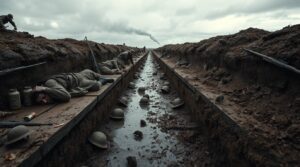
Chapter 5: Life in the Trenches
During World War 1, most of the fighting happened in trenches. Trenches were long, deep holes in the ground. Soldiers lived and fought in them. These trenches stretched for miles across Europe.
What Was Trench Life Like?
Life in the trenches was hard. The ground was wet and muddy. In the winter, it was cold. In the summer, it was hot and smelly.
Soldiers had to be careful all the time. Enemy soldiers were just a few hundred meters away. Bullets and bombs flew overhead.
Big Problems in the Trenches
Soldiers faced many problems:
– Mud – It was everywhere. It made walking difficult.
– Rats – They were big and stole food.
– Disease – Many soldiers got sick.
– Trench Foot – Soldiers’ feet stayed wet for too long. This caused pain and infection.
Even when there was no fighting, life was not easy. Soldiers had to wait for orders, eat simple food, and stay alert.
Before World War 1, wars were different. Soldiers marched into battle. But in this war, they hid in trenches. The fighting was slow. The war lasted years, not months.
In the next chapter, we will talk about weapons and technology. War was changing, and new weapons made it even more dangerous.
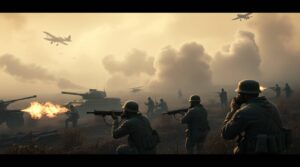
Chapter 6: Weapons and Technology
This war was different from older wars. Before, soldiers used swords and simple guns. But in World War 1, new weapons changed everything.
- Machine Guns
Machine guns were fast and deadly. A single gun could fire hundreds of bullets per minute. Soldiers could not run across open land without being shot. This made battles long and dangerous.
- Artillery (Big Guns)
Artillery were large cannons. They could fire shells over long distances. These shells exploded when they hit the ground. They destroyed trenches, buildings, and soldiers.
- Poison Gas
Poison gas was a new and terrible weapon. It was first used in 1915. The gas burned eyes and lungs. Soldiers had to wear gas masks to survive.
- Tanks
Tanks were big, metal machines. They had thick armor and could move across trenches. The first tanks were slow and broke down often. But later, they became stronger and more useful.
- Airplanes
World War 1 was the first war with airplanes. At first, planes were used for spying. Later, they were used in air battles. Pilots shot at each other in the sky. These pilots were called “flying aces.”
- Submarines
The war was also fought in the water. Submarines were used to sink enemy ships. Germany used a type of submarine called a U-boat. It was silent and deadly.
A War of New Technology
These weapons made the war longer and more deadly. Millions of soldiers and civilians lost their lives.
In the next chapter, we will talk about important battles. Some lasted for months. Many soldiers never came home.
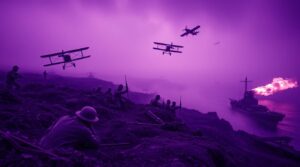
Chapter 7: Important Battles
The war lasted four years. Many battles were long and deadly. Millions of soldiers fought. Some battles lasted for months.
- The Battle of the Marne (1914)
This was the first big battle of the war. German soldiers moved quickly toward Paris, France. They wanted to take the city. But French and British soldiers fought back.
After one week of fighting, Germany failed. They had to retreat. This battle saved France. But the war was far from over.
- The Battle of Verdun (1916)
This was one of the longest battles. It lasted ten months. Germany attacked France. They wanted to make France weak.
The fighting was terrible. Soldiers lived in mud and fire. More than 700,000 soldiers were killed or wounded.
France did not surrender. They held their ground. But both sides suffered.
- The Battle of the Somme (1916)
While France was fighting at Verdun, British soldiers attacked at the Somme.
On the first day, 20,000 British soldiers died. It was the deadliest day in British history. The battle lasted four months.
New weapons, like tanks, were used for the first time. But in the end, both sides lost many men.
A War of Sacrifice
These battles showed that World War 1 was different. It was long, hard, and deadly. Soldiers fought bravely, but victory was slow.
In the next chapter, we will talk about war at sea and in the air. The fight was not only on land. It also happened on the ocean and in the sky.

Chapter 8: War at Sea and in the Air
- War at Sea
The British Royal Navy was the biggest and strongest in the world. Germany had a powerful submarine fleet. These submarines were called U-boats.
Germany used U-boats to sink enemy ships. One of the most famous ships they sank was the Lusitania. It was a passenger ship traveling from the United States to Britain. It was hit by a German torpedo in 1915. More than 1,000 people died. This made many people angry at Germany.
The biggest naval battle was the Battle of Jutland in 1916. Britain and Germany fought for two days. Many ships were destroyed, but there was no clear winner.
- War in the Air
World War 1 was the first war with airplanes. At first, planes were used for spying. Pilots took pictures of enemy positions.
Later, planes were used for fighting. Pilots shot at each other in the sky. These air battles were called dogfights.
One famous pilot was Manfred von Richthofen, also known as the Red Baron. He was a German fighter pilot. He shot down more than 80 planes before he was killed in 1918.
By the end of the war, planes could drop bombs, attack trenches, and fight ships. War in the air had changed forever.
The war was now being fought on land, sea, and air. But something big was about to happen.
In the next chapter, we will talk about why the United States joined the war. This changed everything.
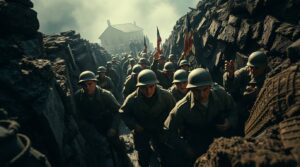
Chapter 9: The United States Joins the War
At the start of World War 1, the United States did not fight. The country wanted to stay neutral. But things changed in 1917.
- German U-Boats Attack Ships
Germany used U-boats to sink ships. They sank the Lusitania in 1915, killing many Americans. People in the U.S. were angry. But the country still did not join the war.
Then, in 1917, Germany increased U-boat attacks. They sank American ships in the Atlantic Ocean. The U.S. could not ignore it anymore.
- The Zimmermann Telegram
In 1917, Britain found a secret message from Germany. This message was called the Zimmermann Telegram.
Germany sent this message to Mexico. They asked Mexico to attack the United States. In return, Germany promised to help Mexico get land from the U.S.
When Americans heard this, they were shocked and angry.
- The U.S. Declares War
On April 6, 1917, the United States declared war on Germany. President Woodrow Wilson said,
“The world must be made safe for democracy.”
Thousands of American soldiers went to Europe. They were called the American Expeditionary Force. Their leader was General John Pershing.
At first, the Allies were tired and weak. But the U.S. brought fresh soldiers, food, and weapons. This gave the Allies new energy.
The war was about to change.
In the next chapter, we will talk about the final battles and the end of the war. The world was ready for peace.

Chapter 10: The Final Battles and the End of the War
By 1918, the war had lasted four years. Millions of soldiers had died or been wounded. People wanted peace, but the fighting was not over yet.
- The Spring Offensive (1918)
At the start of 1918, Germany was still fighting hard. They launched the Spring Offensive. This was a big attack on the Allies.
German soldiers moved fast. They pushed the Allies back. But they were tired and had no reinforcements. The attack slowed down.
- The Hundred Days Offensive (1918)
In August 1918, the Allies fought back. This was called the Hundred Days Offensive.
With fresh American troops, the Allies pushed Germany out of France and Belgium. The German army was losing. Soldiers were tired and hungry. They could not win.
- Germany Surrenders
By November 1918, Germany knew they had lost. The German people were tired of war. Soldiers refused to fight.
On November 11, 1918, Germany signed an armistice. This was an agreement to stop fighting.
At 11:00 a.m., the war was over. People all over the world celebrated.
- The War Ends, But the World Has Changed
World War 1 was finally over. But it had changed the world forever.
In the next chapter, we will talk about the peace treaty and what happened after the war.
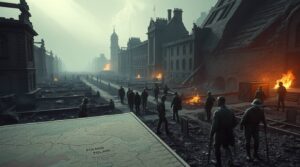
Chapter 11: The Peace Treaty and Its Effects
Welcome back. In the last chapter, we talked about the final battles and the end of the war. Now, we will talk about the peace treaty and its effects.
After the war ended in November 1918, the leaders of the Allied countries met to decide what would happen next. This meeting took place in Paris in 1919.
- The Treaty of Versailles
The peace treaty was called the Treaty of Versailles. It was signed on June 28, 1919.
This treaty punished Germany. Germany had to take blame for starting the war. They also had to pay huge amounts of money to the Allies. This money was called reparations.
Germany also lost land. The country was divided. The German army was reduced in size. They could no longer build a strong army.
- The League of Nations
The treaty also created the League of Nations. This was an international group. Its goal was to prevent future wars.
However, the United States did not join the League. Many Americans were against being involved in other countries’ problems.
- A New World
The peace treaty changed the world. Many countries in Europe were weakened. New countries were created, and old empires fell.
But not everyone was happy. Germany felt angry and humiliated. Many people thought the treaty was unfair.
- The Beginning of Another War?
The treaty did not bring lasting peace. Many problems were left unsolved. In fact, the anger and punishment of Germany would later lead to World War 2.
In the next chapter, we will talk about the legacy of World War 1. What did the war leave behind?
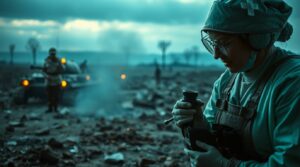
Chapter 12: The Legacy of World War 1
- A Changed World
World War 1 was called “the war to end all wars.” It was the deadliest war the world had ever seen at that time. More than 15 million people died. Many countries were destroyed.
After the war, people hoped for peace. But the world was never the same.
- New Countries and Borders
The war changed the map of Europe. Many old empires collapsed.
The Austro-Hungarian Empire broke into many smaller countries.
The Ottoman Empire lost control of the Middle East.
Germany lost land and became weaker.
New countries like Poland, Czechoslovakia, and Yugoslavia were created.
- Social and Economic Problems
The war destroyed cities and farms. Many people had no homes and no jobs.
Soldiers who returned home had injuries both physical and emotional. Many suffered from shell shock, which today we call PTSD (Post-Traumatic Stress Disorder).
The war also led to economic problems. Countries spent huge amounts of money on weapons. After the war, many economies collapsed. This led to poverty and suffering.
- The Path to World War 2
The Treaty of Versailles punished Germany. Many Germans felt humiliated. They wanted revenge.
This anger helped leaders like Adolf Hitler rise to power. In just 20 years, the world would be at war again.
A War That Never Truly Ended
World War 1 changed everything countries, people, and history. It was supposed to be the last Great War, but instead, it set the stage for an even bigger conflict.
In the next chapter, we will talk about how World War 1 changed technology, medicine, and society.
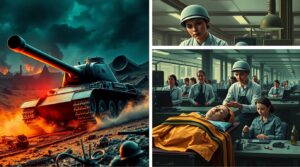
Chapter 13: How World War 1 Changed the World
In the last chapter, we talked about the legacy of World War 1 and how it led to future conflicts. But the war also changed the world in other ways. In this chapter, we will talk about technology, medicine, and society.
- New Technology
World War 1 was the first war to use modern technology. Many of these inventions changed warfare forever.
Tanks were first used in the war. They were slow at first, but later became strong and powerful weapons.
Airplanes became more advanced. In the next war, they would be used for bombing cities.
Machine guns and artillery became deadlier. This made wars more destructive.
Many of these weapons were later used in World War 2.
- Advances in Medicine
The war injured millions of soldiers. Doctors had to find better ways to treat wounds.
Blood transfusions became more common. This helped save many lives.
Plastic surgery improved. Many soldiers had serious facial injuries, and doctors worked to rebuild their faces.
X-rays were used more often to find bullets and broken bones.
These medical advances later helped civilians in hospitals around the world.
- A New Role for Women
Before the war, many women did not work outside the home. But during the war, men went to fight, and women had to replace them.
Women worked in factories, offices, and even as nurses near the battlefields. After the war, many women kept working.
In some countries, women gained more rights. In Britain and the U.S., women won the right to vote.
- The War That Changed Society
After the war, people questioned old traditions. The world felt different.
Art and literature became more emotional. Writers described the horrors of war.
Governments became more involved in people’s lives. Countries started social programs to help war victims.
The war left deep scars, but it also pushed the world forward.
What Comes Next?
World War 1 changed everything from war to technology to human rights.
In the next chapter, we will talk about the soldiers’ stories what they went through, and how they felt.
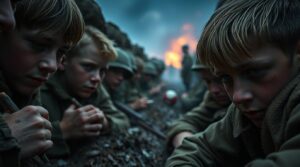
Chapter 14: The Soldiers’ Stories
Welcome back. In the last chapter, we talked about how World War 1 changed technology, medicine, and society. But what about the people who fought in the war?
Millions of soldiers fought in World War 1. Many of them were very young. Some were just 18 years old. They thought the war would be exciting. But soon, they learned the terrible reality.
- Life in the Trenches
Most soldiers spent their time in trenches long, deep holes dug into the ground. Life in the trenches was hard and dangerous.
Rain made the ground muddy and wet.
Rats and lice were everywhere.
Explosions were constant. Soldiers lived in fear of attacks.
Many soldiers suffered from trench foot a disease caused by cold, wet conditions. Some even lost their feet.
- The Fear and Stress
The war was not just physical it was also mental. Soldiers saw their friends die. They heard gunfire all day and night. Many suffered from shell shock, which we now call PTSD (Post-Traumatic Stress Disorder).
Some soldiers wrote letters to their families. They tried to stay hopeful, but deep down, many felt fear and sadness.
- The Christmas Truce
Even in war, there were moments of peace. One of the most famous moments was the Christmas Truce of 1914.
On Christmas Eve, British and German soldiers stopped fighting. They sang songs together. Some even played football. For a short time, they were not enemies, but humans.
But soon, the war started again.
- The End for the Soldiers
When the war ended in 1918, many soldiers went home. But they were not the same.
Some had lost arms or legs. Others had emotional scars. Many found it hard to return to normal life.
Some countries gave medals to their soldiers. Others helped them find jobs. But for many, the war never truly ended.
In the next chapter, we will summarize the war. What did the world learn? And how did World War 1 shape the future?
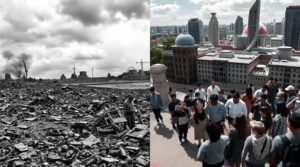
Chapter 15: What We Learned from World War 1.
This is our final chapter. We have talked about the causes of World War 1, the battles, the soldiers, and the peace treaty. But what did the world learn from this war?
In this chapter, we will summarize the key lessons from World War 1.
- War is Not Glorious
Before World War 1, many people thought war was exciting. They believed it was an adventure.
But after the war, people saw the truth. Millions died. Cities were destroyed. War was not glorious it was horrible.
This war changed how people viewed fighting. Many never wanted war again.
- The World Must Work Together
World War 1 showed that countries cannot act alone. When one country makes a mistake, the whole world can be affected.
That is why the League of Nations was created. Later, it was replaced by the United Nations (UN), which still exists today. The goal was to solve problems peacefully without war.
- Punishing a Country Can Lead to More Problems
The Treaty of Versailles punished Germany too much. The country lost money, land, and power. This made the German people angry.
Many historians believe this led to World War 2. When a country feels humiliated, it may want revenge.
This was an important lesson for the future. After World War 2, the world helped rebuild Germany and Japan instead of just punishing them.
- Technology and Medicine Improve During War.
World War 1 caused pain and destruction, but it also led to new technology and better medicine.
X-rays and plastic surgery became more common.
Blood transfusions saved lives.
Tanks and airplanes changed modern warfare.
Even though war is terrible, it sometimes pushes the world to find solutions faster.
Final Thoughts
World War 1 was supposed to be “the war to end all wars.” But just 20 years later, World War 2 began.
This shows that history repeats itself if we do not learn from it. That is why we study history to understand the past and build a better future.
